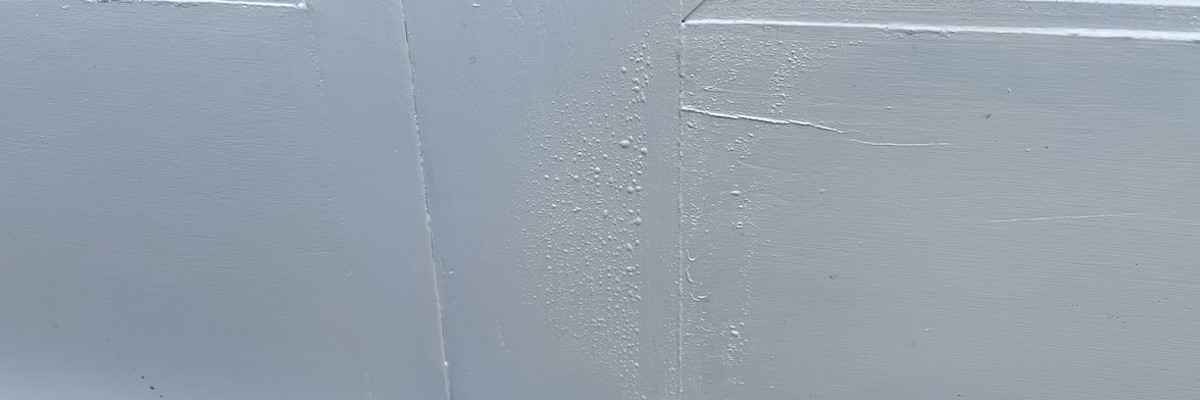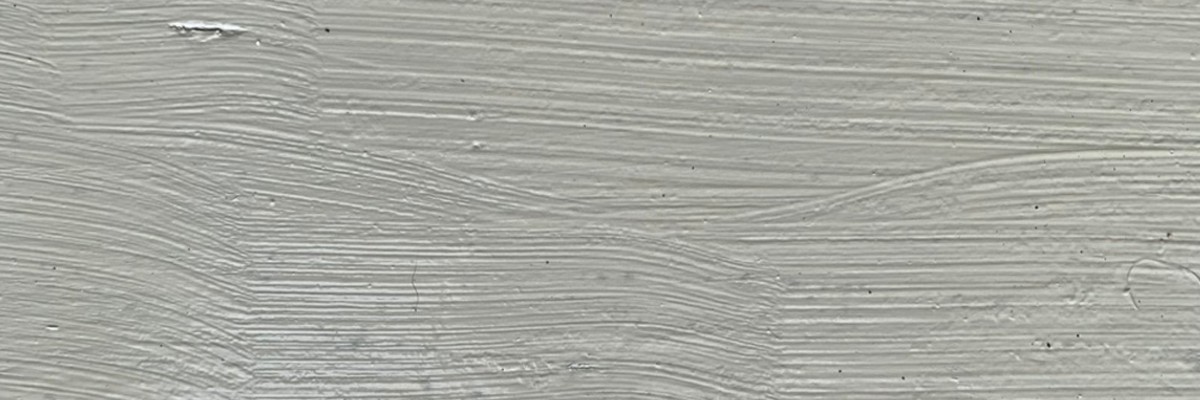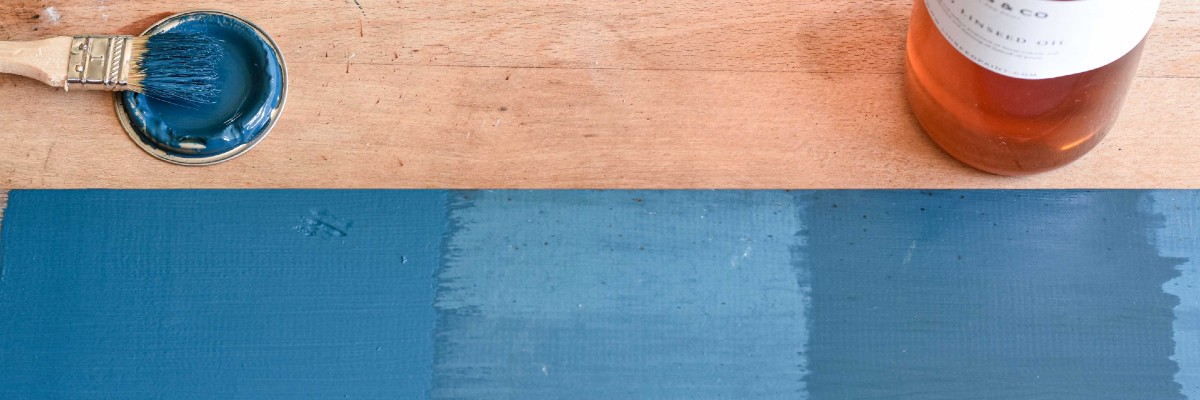
One of the best things about linseed paint is undoubtedly that it requires far less maintenance than conventional paint. However, that’s not to say that it won’t need any maintenance at all. There are certain things that you may wish to look after in the period immediately after finishing a project and in the years following. You can expect excellent protection and preservation of timber and metal from a product that is made from natural products with no solvents, binders or synthetic emulsifiers.
Linseed oil paint’s main purpose is to protect the surface it covers as well as providing an aesthetic finish. If you want a shiny, plastic looking finish then linseed oil paint is probably not for you.
Following Painting
Here are some points to look out for soon after painting.
Rain spots
Even if you’ve done your best to choose a clear day for painting imminent rain cannot always be predicted. If it rains after you have painted, you may see white spots appearing on the painted surface, especially on newly painted surfaces. This is completely normal, you don’t need to worry or do anything. The white spots will dry up and disappear once the weather improves and the water droplets evaporate.

Uneven surfaces or ‘blistering’
As linseed paint absorbs into timber, it will push out any moisture that it comes up against. In addition to water, this wicking process will also push out any chemical residue or resin. These things can remain inside old timber even if it has been fully stripped back to bare. They can also be found inside new timber, especially if it has been treated. the paint can be temporarily compromised. This can result in patchiness, an uneven surface and the paint lifting or blistering. Though this might seem frustrating when you have just achieved a good finish, it is ultimately a good thing. Once the linseed paint has wicked out all the ‘nasties’, the timber will be better protected in the future. If this happens, the best thing to do is to leave the paint for a couple of months (or over the winter) while the wicking process is completed, then give the whole surface a sand down and apply another coat of paint.

Wrinkling or a rough finish
Linseed paint does not need to be painted on as thickly as petrochemical paints do as it is absorbed by the surface rather than just coating it. If it is painted on too thickly, it can result in a poor finish. This is sometimes seen with visible brush strokes or an otherwise rough appearance to the paint. In some cases, linseed paint that has been applied too thickly will result in ‘wrinkling’ which is when the paint has a wrinkled appearance and never fully dries.

If this happens, the best course of action is to scrape off the excess paint and sand the surface. Once this has been done, you should then apply a really thin coat of paint to get a nice, even finish.
Problems drying
One of the downsides of linseed paint is that it does take much longer to dry than petrochemical paints. Ideally, it needs dry conditions and plenty of natural UV light to dry fully. Even when the paint is dry to the touch, it can take weeks or even months for the paint to fully cure, especially if conditions are damp or the surface does not get much direct natural light. However just leave the paint and it will dry out naturally.
Longer Term Maintenance
Though linseed paint certainly lasts a lot longer than conventional plastic paint and requires a great deal less maintenance, that sadly doesn’t mean it requires no maintenance at all. In order to get the best from the linseed paint you’ve applied, you will want to take a little time to look after it.
The choice here is pretty much as follows:
Add a coat of linseed oil on top of painted surfaces every few years (the exact frequency will depend on which colour paint you have chosen and how much direct sunlight the surface gets).
Repaint the surface every 10–15 years.
Either way, you will definitely not need to completely strip and repaint the surface ever again, unlike if you were using conventional outdoor paint.
There are some things to look out for over time:
Surface becoming more matte
Though linseed paint has a very nice sheen when freshly painted, this is not the final finish. In fact, linseed paint will not develop its proper patina for a couple of years. Natural UV light will strip oil from the surface over this time, which will eventually result in the lovely matte finish associated with linseed paint.

Repainting linseed paint too regularly can actually be detrimental to the wooden surface reducing the wicking properties, so no matter how tempting it might be to to hold on to the freshly-painted ‘sheen’ of the paint, try to avoid this. However, you may wish to add a coat of linseed oil to the surface every few years to keep the paint job and the colour looking fresh.
Surface becoming powdery or chalky
It is reasonably normal for the surface layer of linseed paint to turn dull, powdery or chalky. This is especially likely to happen in very hot weather, or if the surface in question is very exposed to the elements. Do remember that whatever is happening on the top layer, the linseed paint is still acting as a protective barrier for the timber underneath. This process is often more visible on darker colours, especially blue. In some cases, the top layer of paint may turn a chalky white colour and come off on your hands.
If this happens, there is a simple solution. Simply wiping the surface down with some linseed oil is usually enough to restore the surface layer.
Colours fading
Just as linseed paint should be expected to develop more of a matte finish over time, you should also expect some changes in the colour of the paint. Some pigments will be more colour-fast than others, so if this is something that concerns you it may be well worth considering your choice of colour.

The important part here is that any colour shift or change is unlikely to have any impact on the function of your paint. Slight colour changes often occur as part of the process of UV light stripping oil over time, but this process is not detrimental to the effectiveness of the paint.
White and off-white colours tend to look fresh for the longest. If your surface is affected by pollen or traffic pollution this may temporarily discolour it, but a good clean with some linseed soap once a year will be sufficient.
Reds, yellows, browns, greys and blacks usually require the least amount of maintenance. As a rule, you wouldn’t normally need to re-oil these colours for 7–8 years, depending on conditions.
Blue and dark green shades are the hardest to keep fresh. In these shades, the oil makes the pigments appear darker, so as this is stripped away the tint will look lighter. This can be resolved easily enough with a fresh coat of oil, but to keep a blue shade looking it’s best – especially if it's on a surface that gets a lot of direct light – you may need to re-oil every year.
Mould developing
Good quality linseed paint should include zinc pigments. Zinc, along with the protection from trapped moisture afforded by linseed paint, does help to combat the growth of mould. However, this doesn’t mean that you won’t still need to keep up with other anti-mould strategies in addition to this. You will want to make sure that you keep an eye out for any standing water on the paintwork. It is also helpful to regularly wipe away any debris, dust or dirt.

If any mould does appear as time goes on, in the first instance the best thing to do is to spray the mould with acetic acid (also known as concentrated vinegar), leave it for 24 hours and then brush the mould off and rinse the area with water.
All of the above is for general guidance only and each project should be assessed on its own. Different climates, solar exposure and pollution all have a big role to play and vary not only from region to region but will also be different between a north and south facing façade.
